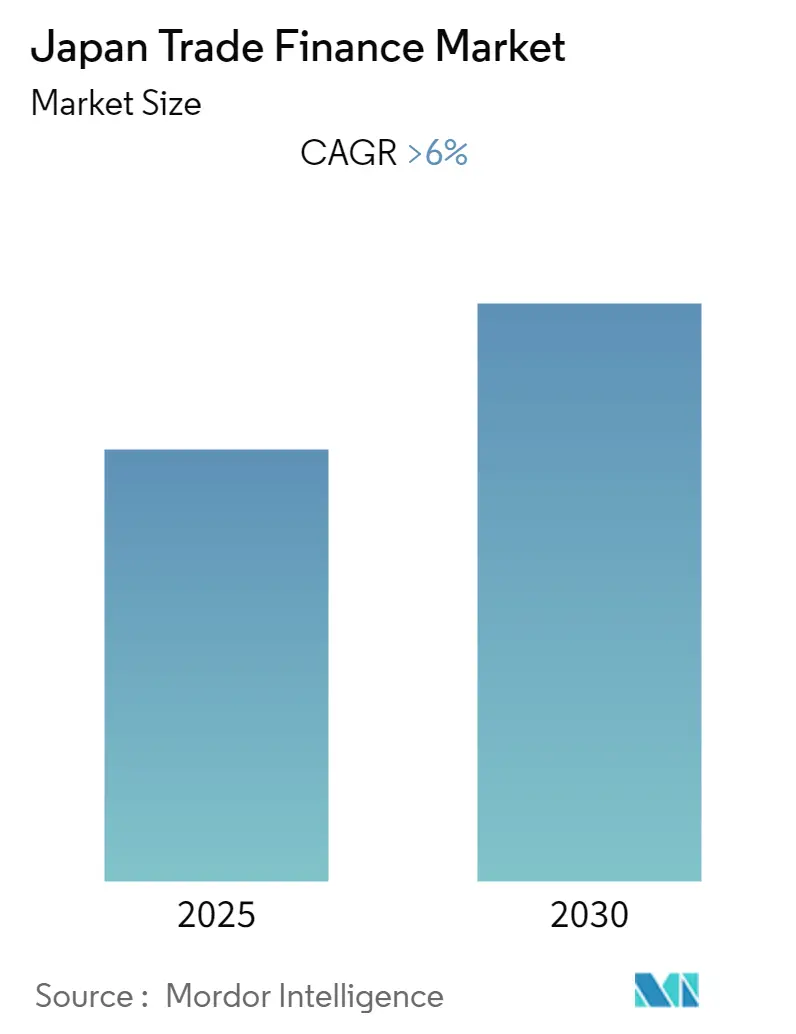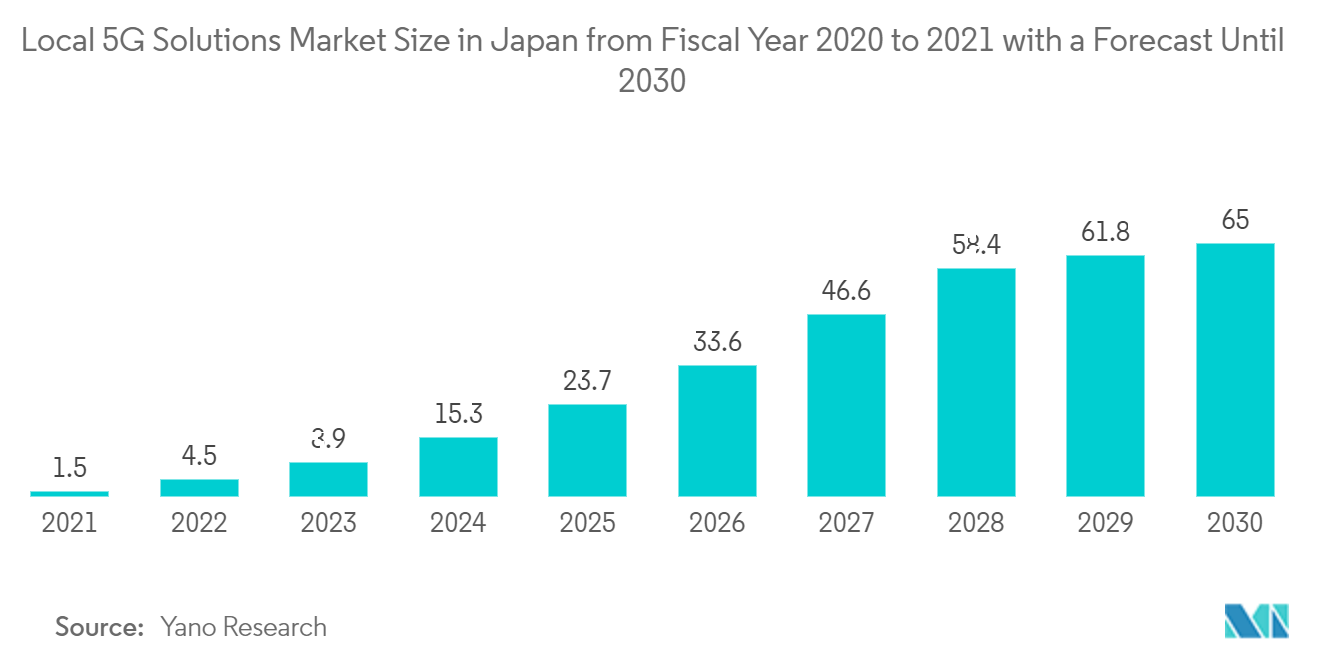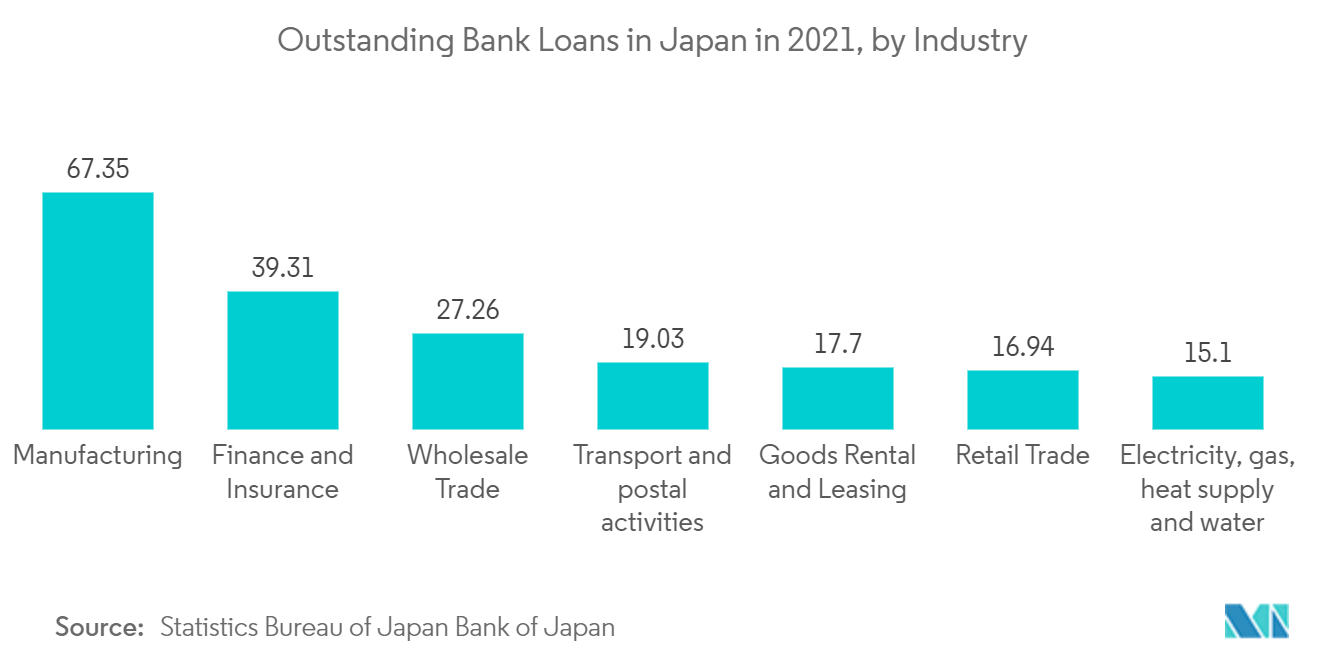Japan Trade Finance Market Analysis
The Japan Trade Finance Market is expected to register a CAGR of greater than 6% during the forecast period.
Regarding trade financing, the phrases import finance and export finance are interchangeable. By acquiring the capital needed to buy inventory and goods, trade finance helps businesses expand. Any business's success depends on effectively managing its cash and working capital. Trade finance is a tool to add financing options based on a company's trade cycles or release cash from current stock or receivables. By minimizing payment lags in your trade cycle, a trade finance facility may enable you to provide more favorable terms to both suppliers and customers. Relationships throughout the supply chain benefit, as does the expansion.
Both imports and exports of products were impacted by the COVID-19 epidemic in Japan. The stay-at-home order reduced the shopping options, which lowered the demand on the supply side. A further reduction in aggregated demand resulted from the decline in sales brought on by workplace closures. The consumption of goods and imports declined as a result of these reductions. COVID-19, on the other hand, raises demand for foods, pharmaceuticals, and items for personal protection like masks and sanitary supplies.
Additionally, it raised the demand for goods related to teleworking and stay-at-home jobs (e.g., laptop computers). On the export front, business operations were halted by workplace closures, which caused production activities to be put on hold. Implementing infection control measures (such as social distance) in factories also decreased productivity. These elements caused production output to decline, which lowered the exports.
Decision-makers determine the best approach to use different financial tools to stem various methods for accelerating growth and lowering risks when market dynamics affect supply and demand curves.
Japan Trade Finance Market Trends
Digitization is Boosting the Market
Technology will continue to support a large portion of Japan's economic rejuvenation. Giving digitization top priority across the economy can boost productivity and income in already-existing enterprises and create new company prospects. Artificial intelligence (AI), for instance, can boost accessibility for senior customers in the finance sector and unleash operational efficiencies in the mobility and construction industries. Supply chain operations may be enhanced via blockchain. Technology and satellite data can also boost decades-old methods' efficiency in more traditional industries like agriculture, forestry, and fisheries.
Developing 5G infrastructure and 6G technology research and development for industrial applications will be crucial. To help it reach its digital goals, the Japanese government set up a digital agency to promote digitalization throughout the government and public sector.
By putting their digital changes into practice, banks can serve as role models for how to speed up the nation's digitalization aspirations. Additionally, to supplement the numerous government support programs aimed at SME digitization, they can acquire digital capabilities relevant to priority industries and offer loans to SMEs for digitization purposes.
Banks in the Service Providers Segment is Driving the Market
In Japan, banks traditionally had a unique function that extended beyond financial and economic considerations to include societal service. This dual mission could become more crucial as Japan sets its journey toward future development.
Japanese banks currently play the traditional roles of the lender, wealth creator and guardian, trading partner, and facilitator of capital markets. In the years leading up to 2030, these jobs will change due to the government's plan, and banks can become more involved in two additional positions: ecosystem orchestrator and policy advisor. Particularly since the banking law revision in November 2021, certain Japanese banks strived in these areas, for instance, by introducing healthcare-related services and increasing assistance for SMEs.
Banks will make conducting business in Japan easier as the country seeks to expand domestic and international trade between now and 2030. Distributed ledger technology (DLT), such as blockchain, drew the majority of attention in this field because it promises to be more effective at facilitating commerce, supply chain finance, and immediate payments. Japanese banks can learn from other international banks, which now provide transaction banking services through various technology-driven solutions, as they invest in technology to simplify things for consumers.
Japan Trade Finance Industry Overview
The study gives a general overview of the trade financing market's competition and a quick rundown of recent merger and acquisition transactions. It comprises the corporate profiles of a few trade finance and trade technology companies in the industry, in addition to banks. The major players include Wells Fargo, Standard Chartered, Morgan Stanley, etc.
Japan Trade Finance Market Leaders
-
Wells Fargo
-
Morgan Stanley
-
Sumitomo Mitsui Banking Corporation
-
Standard Chartered
-
Mizuho Financial Group
- *Disclaimer: Major Players sorted in no particular order
Japan Trade Finance Market News
- October 2022: Morgan Stanley Investment Management (MSIM) chose Opportunity Finance Network (OFN) as its diversity and inclusion partner for MSIM's charity donation connected to the recently introduced Impact Class, the firm said today. The OFN is a top national network comprising 370 Community Development Finance Institutions (CDFIs). Its goal is to help underserved areas get cheap, honest financial services and products.
- August 2022: A Memorandum of Understanding (MOU) was signed between Sumitomo Mitsui Banking Corporation (SMBC; President and CEO: Makoto Takashima) and Banque Misr to foster cooperation about trade digitization. The two banks' collaboration in trade digitalization will be accelerated by signing this MOU, which also aims to strengthen cross-industry collaboration. This collaboration will include digitalizing trade documents and visualizing trade transaction processes between Egypt, Japan, and other Asian nations.
Japan Trade Finance Industry Segmentation
The term "trade finance" is used to describe a variety of tactics used to facilitate global trade. It refers to domestic and international trade transactions and denotes funding for commerce. A buyer and a vendor of products and services are necessary for a commerce transaction. The report covers comprehension of trade finance and its business models, and thorough market segmentation, product categories, current market trends, changes in market dynamics, and expansion opportunities through examination of market size and projections for different segments. The Japan Trade Finance Market is segmented by the service provider (banks, trade finance companies, insurance companies, and other service providers) and application (domestic and international). The report offers market size and forecasts for Japan Trade Finance Market in value (USD million) for all the above segments.
| Service Provider | Banks |
| Trade Finance Companies | |
| Insurance Companies | |
| Other Service Providers | |
| Application | Domestic |
| International |
| Banks |
| Trade Finance Companies |
| Insurance Companies |
| Other Service Providers |
| Domestic |
| International |
Japan Trade Finance Market Research FAQs
What is the current Japan Trade Finance Market size?
The Japan Trade Finance Market is projected to register a CAGR of greater than 6% during the forecast period (2025-2030)
Who are the key players in Japan Trade Finance Market?
Wells Fargo, Morgan Stanley, Sumitomo Mitsui Banking Corporation, Standard Chartered and Mizuho Financial Group are the major companies operating in the Japan Trade Finance Market.
What years does this Japan Trade Finance Market cover?
The report covers the Japan Trade Finance Market historical market size for years: 2020, 2021, 2022, 2023 and 2024. The report also forecasts the Japan Trade Finance Market size for years: 2025, 2026, 2027, 2028, 2029 and 2030.
Our Best Selling Reports
Japan Trade Finance Industry Report
Statistics for the 2025 Japan Trade Finance market share, size and revenue growth rate, created by Mordor Intelligence™ Industry Reports. Japan Trade Finance analysis includes a market forecast outlook for 2025 to 2030 and historical overview. Get a sample of this industry analysis as a free report PDF download.

_-_Copy.webp)



.webp)

